
Ivor Novello was a Welsh actor, dramatist, singer and composer who became one of the most popular British entertainers of the first half of the 20th century.
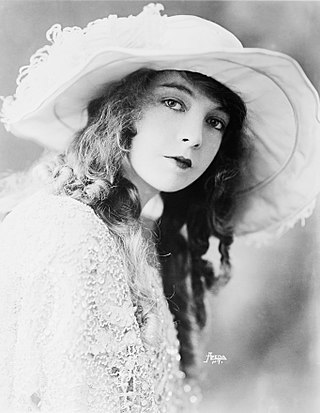
Lillian Diana Gish was an American actress. Her film-acting career spanned 75 years, from 1912, in silent film shorts, to 1987. Gish was called the "First Lady of American Cinema", and is credited with pioneering fundamental film performance techniques. In 1999, the American Film Institute ranked Gish as the 17th greatest female movie star of Classic Hollywood cinema.

Mary Miles Minter was an American actress, and one of the leading ladies who established the early Hollywood star system. She appeared in 53 silent films from 1912 to 1923.

Mae Marsh was an American film actress whose career spanned over 50 years.

Lucille La Verne Mitchum was an American actress known for her appearances in early sound films, as well as for her triumphs on the American stage. She is most widely remembered as the voice of the first Disney villain, the Evil Queen in Snow White and the Seven Dwarfs (1937), Walt Disney's first full-length animated feature film.
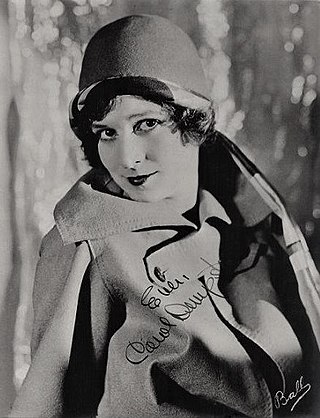
Carol Dempster was an American film actress of the silent film era. She appeared in films from 1916 to 1926, working with D. W. Griffith extensively.

The Merry Widow is a 1925 American silent romantic drama/black comedy film directed and written by Erich von Stroheim. Released by Metro-Goldwyn-Mayer, the film stars Mae Murray, John Gilbert, Roy D'Arcy, and Tully Marshall, with pre-fame uncredited appearances by Joan Crawford and Clark Gable.

Isn't Life Wonderful is a 1924 American silent romantic drama film directed by D. W. Griffith for his company D. W. Griffith Productions, and distributed by United Artists. It was based on the short story "Isn’t Life Wonderful?" in the 1923 book Defeat by Geoffrey Moss, and it was released under the alternative title Dawn.
An Adventure in the Autumn Woods is a 1913 American short drama film directed by D. W. Griffith.
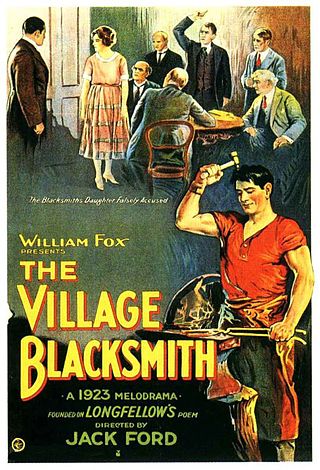
The Village Blacksmith is a 1922 American silent melodrama film directed by John Ford and produced and distributed by Fox Film Corporation. One of the eight reels survives at the UCLA Film and Television Archive, and therefore the film is considered to be lost. It was loosely adapted from the poem of the same name by Henry Wadsworth Longfellow.
A Temporary Truce is a 1912 American short silent Western film directed by D. W. Griffith and starring Blanche Sweet. A print of the film survives in the film archive of the Library of Congress.

The Aryan is a 1916 American silent Western film starring William S. Hart, Gertrude Claire, Charles K. French, Louise Glaum, and Bessie Love.

Sally of the Sawdust is a 1925 American silent comedy film directed by D. W. Griffith and starring W. C. Fields. It was based on the 1923 stage musical Poppy. Fields would later star in a second film version, Poppy (1936).

Clarine E. Seymour was an American silent film actress.
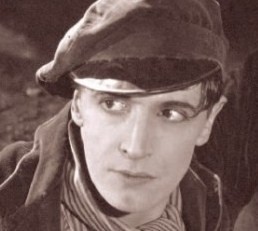
The Rat is a 1925 British silent film drama, directed by Graham Cutts and starring Ivor Novello, Mae Marsh and Isabel Jeans. The film is based on the 1924 play of the same title written by Novello and Constance Collier, set in the Parisian criminal underworld. The film's louche settings and melodramatic storyline proved popular with audiences, and its success spawned two sequels, The Triumph of the Rat (1926) and The Return of the Rat (1929).

The Triumph of the Rat is a 1926 British silent film drama, directed by Graham Cutts for Gainsborough Pictures and starring Ivor Novello, Isabel Jeans and Nina Vanna.
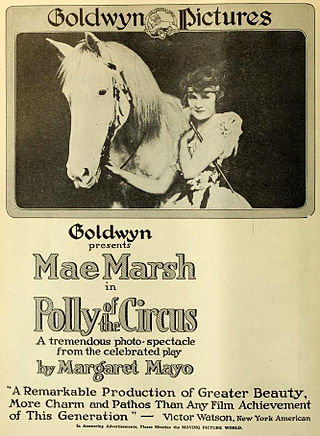
Polly of the Circus is a 1917 American silent drama film notable as the first film produced by Samuel Goldwyn after founding his studio Goldwyn Pictures. This film starred Mae Marsh, usually an actress for D.W. Griffith, but now under contract to Goldwyn for a series of films. The film was based on the 1907 Broadway play Polly of the Circus by Margaret Mayo which starred Mabel Taliaferro. Presumably when MGM remade Polly of the Circus in 1932 with Marion Davies, they still owned the screen rights inherited from the 1924 merger by Marcus Loew of the Metro, Goldwyn, and Louis B. Mayer studios. This film marks the first appearance of Slats, the lion mascot of Goldwyn Pictures and Metro-Goldwyn-Mayer. Prints and/or fragments were found in the Dawson Film Find in 1978.

Acquitted is a 1916 American silent mystery film produced by the Fine Arts Film Company and distributed by Triangle Film Corporation. Paul Powell directed a screenplay by Roy Somerville based on a 1907 short story by Mary Roberts Rinehart. Tod Browning served as an uncredited writer.

The Girl Who Stayed at Home is a 1919 American silent drama film produced and directed by D. W. Griffith and released by Paramount Pictures. Prints of the film exist.
The Little Tease is a 1913 silent black and white drama film directed by D. W. Griffith, produced by Biograph Company and starring Henry B. Walthall and Mae Marsh.

















